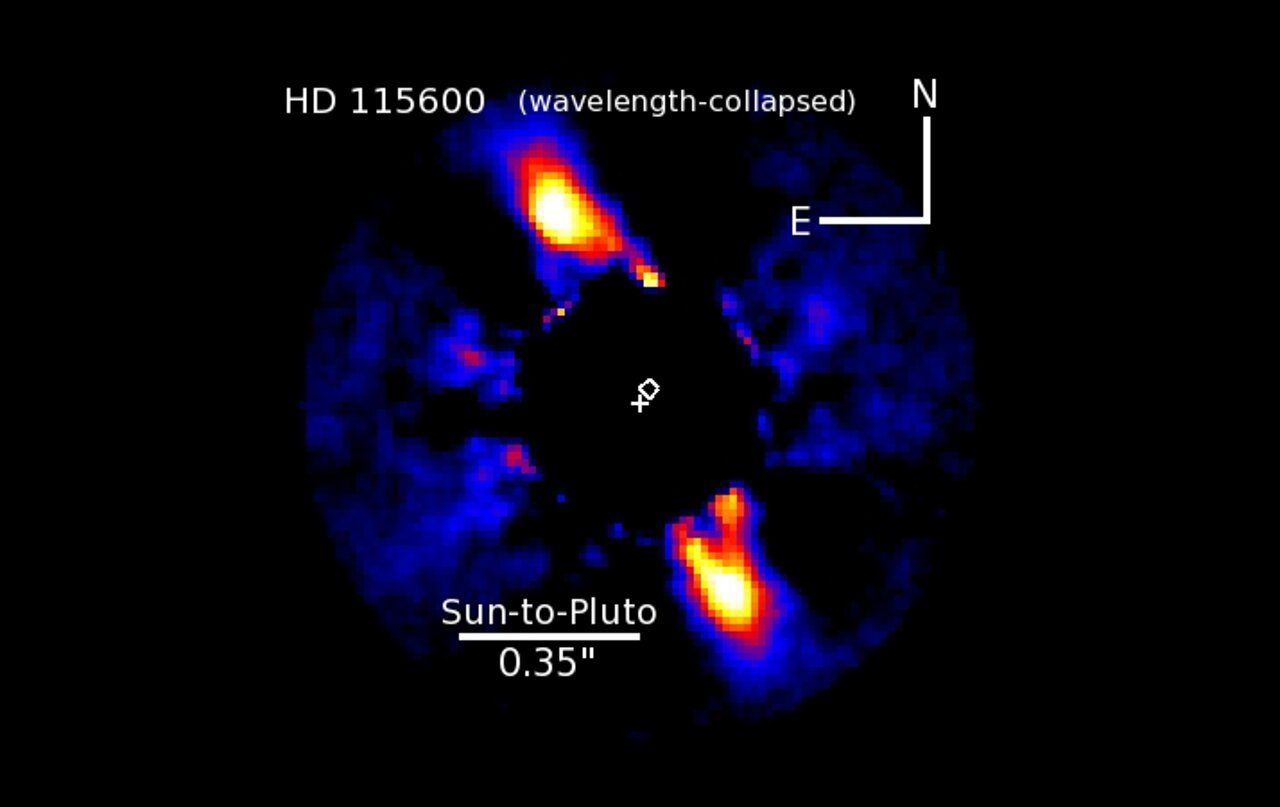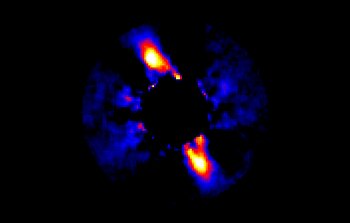Discovery Harkens to Early Solar System
May 27, 2015

Using the Gemini Planet Imager (GPI) at the Gemini South telescope in Chile, astronomers have discovered a young, emerging planetary system that shares remarkable similarities to our own Solar System in its infancy.
GPI images reveal the disk as a bright ring of dust around a star only slightly more massive than the Sun. It is located about 360 light-years away, in a region similar to that in which the Sun was formed. The disk is not perfectly centered on the star, likely sculpted by one or more Solar System-like planets. Even more remarkable, the disk is almost exactly the same distance from its host star as, and may have a composition similar to, our Solar System’s Kuiper Belt. The Kuiper Belt is a region of micron-sized dust to moon-sized objects like Pluto left over from the formation of our Solar System more than 4 billion years ago.
“It’s like looking at the outer Solar System when it was a toddler,” said principal investigator Thayne Currie, an astronomer at the Subaru Observatory in Hawai‘i.
The discovery was made possible by GPI’s cutting edge adaptive optics system and coronagraph, which greatly reduced the star’s glare obscuring the light from the disk. “In just one of our many 50-second exposures we could see what previous instruments failed to see in more than 50 minutes,” Currie said. The star, going by the designation HD 115600, was the first object the research team looked at. “Over the next few years, I’m optimistic that GPI will reveal many more debris disks and young planets. Who knows what strange, new worlds we will find,” Currie added.
Links
- The University of Cambridge, UK, has a press release of this discovery as well.
- The paper is accepted for publication in The Astrophysical Journal and can be found here.

